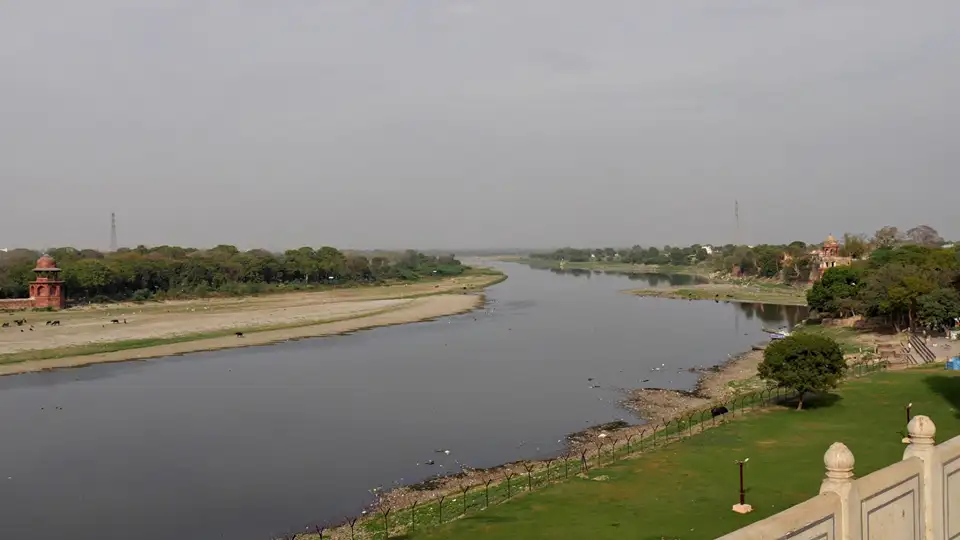- Introduction: A New Phase in Yamuna River Cleanup
- The Watermaster Dredger: Finnish Engineering for Indian Waters
- Multi-Purpose Capabilities of the Dredger
- Government’s Vision and Implementation Plan
- Expected Impact on the Yamuna River Restoration
- Future Outlook: Modern Dredging Technology in Urban Water Management
- Conclusion
Introduction: A New Phase in Yamuna River Cleanup
The Delhi Government has taken a major step toward improving the capital’s waterways by introducing advanced dredging technology to clean up the Yamuna River. With the recent procurement of a Finland-made Watermaster dredger, large-scale desilting and cleaning operations are expected to accelerate, marking a significant improvement in the ongoing efforts to restore one of India’s most polluted rivers.
The initiative represents a focused move toward sustainable river management and the deployment of modern equipment to restore the Yamuna’s natural flow and reduce pollution levels more effectively than previous manual or semi-mechanized methods.
The Watermaster Dredger: Finnish Engineering for Indian Waters
Manufactured by Watermaster/Aquamec Ltd., the newly acquired Watermaster dredger is a Classic 4 model designed for both land and water operations. This amphibious dredger, valued at approximately ₹8 crore ($910,770), is known for its versatility and efficiency in managing silt, debris, and aquatic vegetation.
The dredger’s design allows it to maneuver in shallow areas where traditional dredging vessels cannot operate. With the ability to self-load and unload, it can function independently, reducing the need for auxiliary support equipment and saving both time and operational costs during the Yamuna River cleanup.
Multi-Purpose Capabilities of the Dredger
The Watermaster dredger is engineered as a multipurpose amphibious machine capable of dredging, desilting, and cleaning waterways. Its flexibility allows it to remove sediment buildup that restricts water flow and contributes to flooding during monsoon seasons.
Apart from working in the Yamuna, the dredger will also be deployed in the Najafgarh drain, one of Delhi’s most critical drainage systems. This versatility underscores how a single piece of equipment can significantly enhance water management infrastructure across multiple locations, making the Yamuna River cleanup effort more holistic and far-reaching.
Government’s Vision and Implementation Plan
Delhi’s Irrigation and Flood Control Minister, Parvesh Verma, emphasized the importance of using modern technology for efficient river restoration. “This machine will help us clean the Yamuna River faster and more effectively than ever before,” he stated.
According to the government’s plan, the dredger is expected to arrive in India before December and begin full operations by January. The initiative is part of a larger strategy to improve flood control, enhance water flow, and support the cleanup of the Yamuna River under Delhi’s ongoing rejuvenation program.
Expected Impact on the Yamuna River Restoration
The arrival of the Watermaster dredger is expected to bring a noticeable change to the pace and quality of the Yamuna River cleanup. By efficiently removing silt and debris, the dredger will help restore the river’s depth and increase its carrying capacity, reducing risks of flooding and stagnation.
Environmental experts also anticipate reduced waste and pollutant accumulation in the riverbed, leading to gradual improvements in water quality. The enhanced flow of the Yamuna will benefit not only aquatic life but also the surrounding ecosystems and communities that depend on the river for livelihoods and cultural practices.
Future Outlook: Modern Dredging Technology in Urban Water Management
The successful deployment of this Watermaster dredger could set a new precedent for river restoration across India. Urban waterways in cities like Mumbai, Kolkata, and Chennai face similar challenges with siltation and waste accumulation.
If the Yamuna initiative proves effective, it could inspire other state governments to invest in similar multipurpose equipment, accelerating the shift toward modern, sustainable dredging solutions. This approach aligns with India’s broader mission to rejuvenate rivers under national programs focusing on environmental sustainability and flood control.
Conclusion
The Yamuna River cleanup is entering a new, technology-driven era with the introduction of the Watermaster dredger from Finland. This advanced amphibious equipment reflects Delhi’s commitment to cleaner waterways and long-term ecological restoration.
With the dredger set to become operational soon, Delhi’s waterways may soon experience a visible transformation, improving not only the Yamuna’s health but also the city’s resilience against flooding and water pollution.
